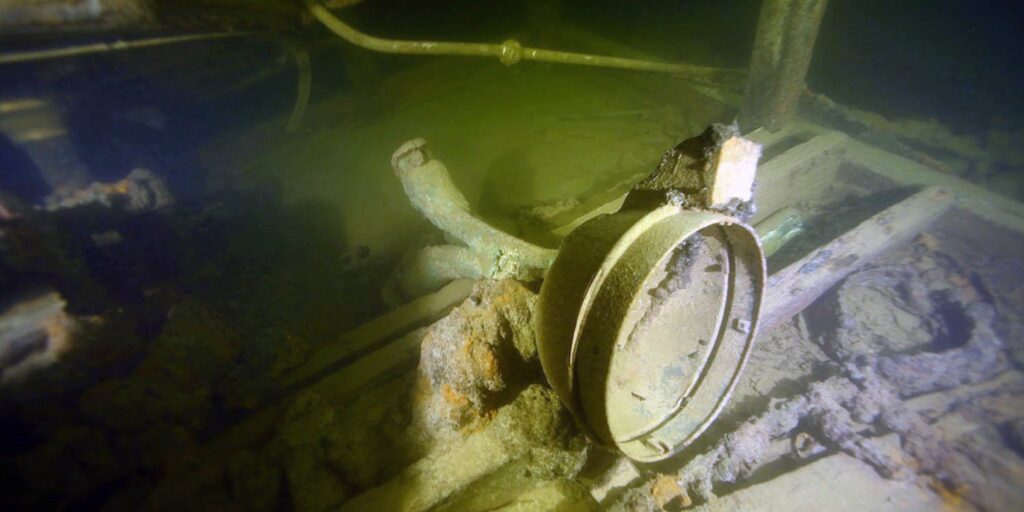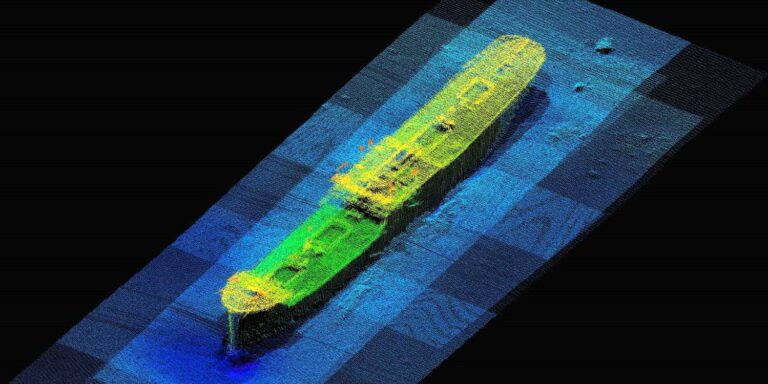A 19th-century British cargo steamer wreck, identified in the Baltic Sea last autumn, has been described as “relatively accessible for diving and basically untouched – which is likely to attract many divers to an amazing experience”. That’s according to marine archaeologists from Sweden’s Vrak shipwreck museum, currently undertaking a comprehensive survey of the shipwreck.
Also read: 2 lions with apple: 17th-century carvings stun divers
The 70m Annie, which is to be accorded “ancient relic” status in Sweden, is described as having “a high cultural-historical value and great research potential”.
Built in Sunderland in 1877, the steamer was owned by Fredrick Gordon & Co. In 1891 she left Sweden’s north-eastern Baltic city of Skellefteå carrying a cargo of timber bound for Sutton Bridge in Lincolnshire.
What was later described as carelessness and navigational ambiguities resulted in the Annie running aground about 50 nautical miles south of her departure point, at Holmsund near Umeå. Extensive hull damage caused her to take in water, and she sank while under tow by a salvage steamer.
The crew of 18 survived the incident, but captain William Walter Burn and his first mate were considered by a tribunal to have “acted unskilfully” and were suspended from service for six months.

Last September the Norwegian Maritime Administration discovered the wreck outside Holmsund at a depth of around 35m during a routine survey. Local scuba diver Mikael Rönnkvist and wreck researcher Simon Kenttä dived and were able to identify the upright ship.
They found the name “Annie” both on the ship’s clock and the steering wheel, which was also marked “1877” and “London”, and observed details that matched archival records. The divers reported that the ship’s timbers had been well-preserved in the brackish sea water.
‘150-year-old museum’
Vrak's underwater archaeologists have now been charged with devising a care and protection plan for the shipwreck.
“Annie is very well preserved, with a basically intact hull,” says Vrak archaeologist Patrik Höglund. “In addition, cargo and equipment appear to be largely preserved.” He suggested that the vessel might be classified as a ”well-decker”, a ship that has a well-deck on its weather deck lying below forecastle and bridge level.
“Annie is a good representative of her ship type and reflects the rapid industrialisation during the second half of the 19th century, with steel steamships and the expansion of the Swedish sawmill industry along the coast of Norrland,” says Höglund.
The survey dives will document and establish the wreck’s status and provide underwater images for 3D modelling.
“It is unusual to have well-preserved wrecks along the Norrland coast,” said Rönnkvist last year. “The sea is not that deep there and the ice therefore presses on and destroys the wrecks.” And he described the Annie as “like a 150-year-old museum that has been closed for the past 130 years”.
The Vrak museum is located in Stockholm.
Also on Divernet: Divers Date Unique Baltic Shipwreck, Vrak Divers Find 10 More Baltic Wrecks, 6 Historic Wrecks ID’d For Diver Trail, Divers Find Barricade ‘Forest’ In Baltic, Exploring Baltic Shipwrecks In Sweden

